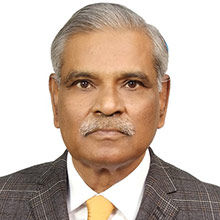Introduction
Each drafting operation introduces freshirregularity, the irregularity of the final yarn being the summation ofirregularities produced during each operation. Roll drafting or the attenuationof slivers and Rovings to produce yarn of specified count is the most importantprinciple involved in the processing of raw material into yarn. Theirregularity introduced in drafting mainly depends upon the parameters of thedrafting system, mechanical faults and quality of the input material. When mechanicalfaults are eliminated, drafting irregularities depend upon to control on thefloating fibers in the drafting zone. Setting between the roller nips, distancebetween the apron at the nip, distance between the apron at the nip, andpressure on the top rollers are some of the factors. The characteristics of thesliver fed to the drafting system also exercise considerable influence on theirregularities introduced and drafting system operated under the optimumconditions. Short fiber content, neps, trash and other impurities degree of fiberparallelization and number and extend of residual hooks in the fibers togetherwith their direction of presentation are some of the important factors thatcharacterize sliver quality and determine its behavior during drafting.
Nutter and slater examined the effect ofhooked fibers on yarn strength and found that better strength is obtained whena fiber tip is presented to the drafting system than a hooked end. Grade,Wakanker and Bhaduri found better yarn regularity and strength when majorityhooks are fed as trailing then as leading to the ring frame. They further foundthat the yarn quality diminishes with increase in the number of majority hookswhen these are fed as leading. Simpson, Deluca and Flori also confirmed thatfeeding majority hooks as leading to the ring frame contributed to poorer yarnquality and more breakages, the effect being pronounced in case of fine yarns.Apart from hooks, the fiber parallelization may also effect on draftingirregularities.
The treatment given to raw materialduring spinning process through various machines greatly influences not onlythe quality of spun yarn but also its quantum. Factors like setting betweenrollers, draft distribution, Pressure on top rollers, shore hardness of rubbercots, spacers, type/size of ring travelers, rings, relative humidity in theplant and mixing of raw material etc, contribute towards the quality andquantity of yarn. Moisture content in the raw material especially in cotton isvery important because of its direct effect on yarn strength as well aselongation and neps in the yarn. Whereas the strength and elongation directly affectthe performance of yarn in warping, the neps influence surface of finishedcloth and dye take up.
About the Author
The authoris specialized in Compact Spinning, having 2 decades of rich experience inreputable groups and mills. He is also the writer of a book on "Statisticalquality control".










Comments